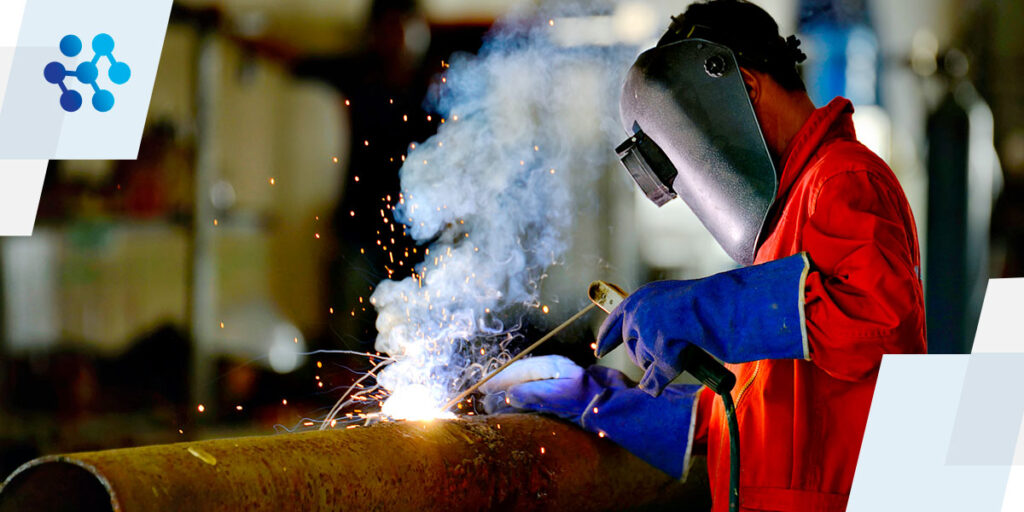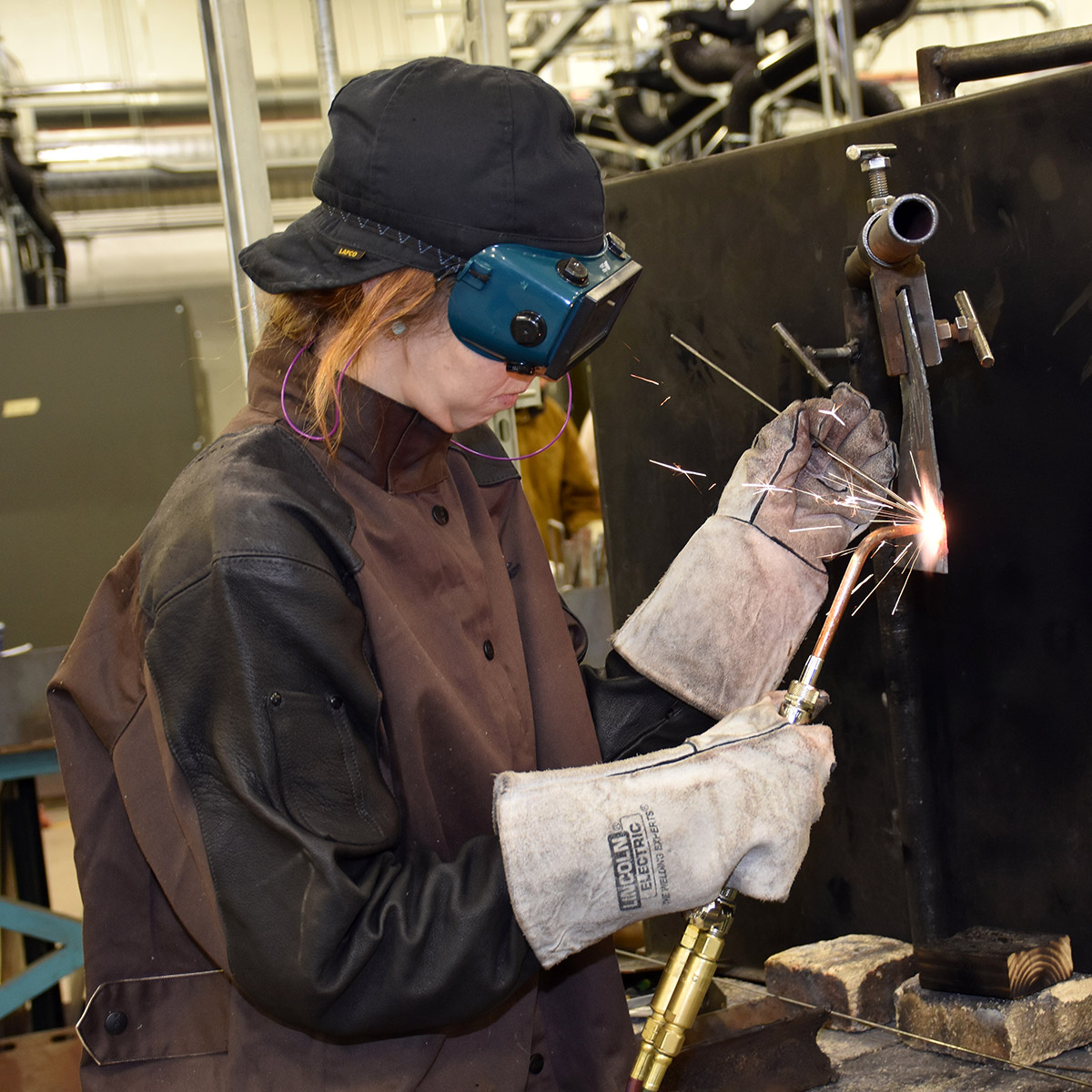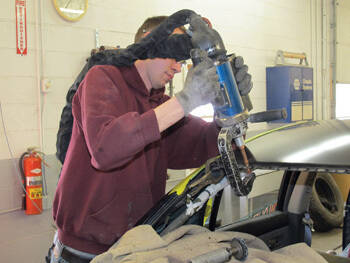Common Welding Repair Work Issues and How to Address Them Properly
Welding fixings typically encounter a variety of problems that can jeopardize the honesty of the end product. Common issues consist of inadequate infiltration, porosity, and imbalance, to name a few. Each issue offers one-of-a-kind obstacles that need specific techniques for resolution. Understanding these issues is necessary for welders intending to improve their skills and end results. This discussion will certainly discover these typical welding fixing issues and reliable techniques to resolve them.
Poor Infiltration
Insufficient penetration happens when the weld metal falls short to completely fuse with the base material, causing weak joints and prospective architectural failures. This issue usually stems from insufficient warm input, inaccurate electrode angle, or incorrect welding rate. Welders may run into poor penetration as a result of a mistake of the needed criteria for a certain product density or type. Furthermore, contamination on the base product's surface area can prevent reliable bonding, worsening the issue. To attend to inadequate infiltration, welders should assure appropriate setups on their tools and keep a clean work surface area. Normal inspection of welds is advised to determine any type of shortages early, enabling prompt adjustments and the avoidance of jeopardized structural honesty in bonded settings up.
Porosity
Porosity is an usual problem in welded joints that shows up as little gas bubbles entraped within the weld steel. This problem can jeopardize the stability of the weld, bring about lowered strength and prospective failure under stress and anxiety. Belgrade. Porosity usually occurs from contamination, moisture, or inappropriate welding methods, which permit gases to run away into the liquified weld pool. To address porosity, welders ought to assure correct surface area prep work, preserve a tidy functioning environment, and utilize appropriate welding criteria. In addition, selecting the appropriate filler product and shielding gas can reduce gas entrapment. Routine assessment and testing of welds can help recognize porosity early, assuring timely rehabilitative activities are taken, consequently maintaining the quality and dependability of the welded structure
Misalignment
Misalignment in welding can develop from numerous aspects, including incorrect setup and thermal development. Recognizing the source is vital for efficient resolution. A number of modification methods are available to realign parts and ensure architectural honesty.
Causes of Imbalance
Welding misalignment typically comes from a selection of underlying problems that can jeopardize structural stability. One key cause is incorrect fit-up of elements before welding, which can cause voids and uneven surface areas. Variations in thermal growth during the welding procedure can also lead to distortion, especially if the products being signed up with have different coefficients of expansion. Furthermore, inadequate fixturing and clamping might fall short to hold elements firmly in location, causing movement during welding. Poorly maintained devices, consisting of welding devices and devices, might introduce variances in the weld grain, additional adding to imbalance. Operator mistake, stemming from insufficient training or experience, can also play a considerable function in developing misaligned welds.

Adjustment Techniques Offered
Dealing with imbalance effectively calls for a mix of rehabilitative strategies tailored to the certain issues handy. One usual approach is making use of jigs or fixtures to hold components in the appropriate placement during welding, making sure regular alignment. Additionally, preheating the materials can help in reducing distortion and enhance fit-up. For substantial misalignment, mechanical adjustment techniques, such as utilizing hydraulic jacks or clamps, can be employed to fix the setting before welding. Post-weld warm treatment may additionally be essential to ease anxieties brought on by imbalance. Ultimately, cautious assessment and modification during the arrangement phase can stop misalignment problems from becoming considerable troubles, promoting a smoother welding process and boosting total architectural honesty.
Distortion
Distortion is an usual obstacle in welding that can occur from different factors, including irregular heating and cooling. Understanding the sources of distortion is crucial for applying reliable prevention methods. Resolving this problem not just boosts structural integrity yet additionally enhances the overall top quality of the weld.
Reasons for Distortion
When based on the intense heat of welding, products frequently undergo changes that can lead to distortion. This phenomenon mainly develops from thermal development and tightening during the welding procedure. As the weld location heats up, the material broadens; upon cooling, it acquires, which can produce interior anxieties. On top of that, unequal heating across a workpiece can aggravate these stresses, causing warping or bending. The sort of product additionally plays a considerable role; metals with varying thermal conductivity and coefficients of expansion may react in different ways, resulting in unforeseeable distortions. Moreover, inadequate joint style and inadequate fixturing can add to imbalance throughout welding, boosting the chance of distortion. Understanding these causes is vital for efficient welding repair work and prevention approaches.
Prevention Techniques
Effective avoidance techniques for distortion throughout welding emphasis on controlling heat input and ensuring appropriate joint design. Preserving a consistent warm input aids to reduce thermal expansion Visit Your URL and tightening, which can result in distortion. Using strategies such as preheating the workpiece can additionally reduce the temperature gradient, promoting uniform home heating. Additionally, choosing appropriate joint styles, such as T-joints or lap joints, can boost stability and lower anxiety concentrations. Carrying out correct fixturing to safeguard the workpieces in location additionally aids in maintaining positioning during the welding process. Finally, staggered welding sequences can distribute warmth extra equally, preventing localized distortion. By using these techniques, welders can substantially reduce the probability of distortion and enhance the overall top quality of their welds.
Splitting
Splitting is a typical concern run into in welding repair services, usually arising from different aspects such as incorrect air conditioning rates, product choice, or inadequate joint prep work. The event of splits can significantly endanger the integrity of the weld, bring about prospective failures during operation. To address this issue, welders have to initially analyze the root triggers, making sure that materials work and appropriately picked for the specific application. Additionally, managing the cooling rate throughout the welding procedure is important; rapid air conditioning can induce anxiety and cause cracking. Proper joint design and preparation also add to lessening the risk. Carrying out these methods can improve weld quality and toughness, ultimately minimizing the chance of fracturing in finished weldments.

Incomplete Combination
A considerable concern in welding repairs is incomplete combination, which occurs when the weld metal does not sufficiently bond with the base product or previous weld passes - Fabrication. This defect can lead to weak points in the joint, potentially compromising the honesty of the bonded framework. Elements adding to insufficient combination consist of not enough heat input, incorrect welding method, and contamination of the surface areas being joined. To address this concern effectively, welders must guarantee correct pre-weld cleansing and surface preparation, along with change their welding criteria to achieve sufficient infiltration and blend. Normal evaluation during the find more welding process can also help determine insufficient welding face shield fusion early, enabling prompt rehabilitative procedures to boost the overall top quality of the weld
Overheating
While welding repair work can improve architectural honesty, overheating provides a significant challenge that can cause product deterioration. Extreme warmth during welding can alter the mechanical residential properties of steels, resulting in minimized strength, increased brittleness, and bending. This phenomenon is especially critical in high-stress applications where structural integrity is critical. Identifying overheating can include aesthetic examinations for discoloration or distortion, as well as monitoring temperature level during the welding procedure. To mitigate the threats associated with getting too hot, welders need to employ ideal strategies, such as controlling heat input, adjusting traveling speed, and using appropriate filler products. Furthermore, implementing pre- and post-weld warm treatments can assist restore product buildings and improve the total quality of the repair work, guaranteeing long-lasting performance and safety.
Often Asked Questions
What Are the Usual Signs of a Welding Defect?

How Can I Examine My Welds for Top quality?
To check welds for quality, one can use visual evaluations, ultrasonic testing, and radiographic approaches. Each technique ensures architectural honesty, determines defects, and validates adherence to specified standards, ultimately enhancing the integrity of the welded joints.
What Security Preventative Measures Should I Take While Welding?
When welding, one ought to focus on security by using proper individual safety tools, ensuring correct ventilation, protecting combustible materials away, preserving a clean office, and recognizing environments to avoid mishaps and injuries.
Can I Repair a Weld Without Redesigning the Entire Joint?
Fixing a weld without redoing the whole joint is feasible, depending upon the damages (Montana Mobile Welding and Repair Belgrade). Techniques such as grinding, including filler product, or using a welding procedure can successfully attend to certain problems while preserving the surrounding framework
What Tools Are Crucial for Reliable Welding Fixes?
Crucial devices for efficient welding repairs include a welding device, cord brush, grinder, safety gear, clamps, and filler products. Each tool plays an essential duty in guaranteeing quality and safety during the repair process. Porosity typically emerges from contamination, moisture, or inappropriate welding techniques, which enable gases to run away into the molten weld swimming pool. Poorly conserved equipment, including welding makers and devices, may introduce incongruities in the weld grain, additional contributing to misalignment. When subjected to the extreme warm of welding, products commonly undertake changes that can lead to distortion. Fracturing is an usual issue come across in welding repair services, commonly resulting from various aspects such as incorrect air conditioning prices, material choice, or insufficient joint preparation. A substantial issue in welding repair work is incomplete combination, which occurs when the weld steel does not adequately bond with the base product or previous weld passes.